|
|
Mexico has become a preferred destination of choice for the C-suite to set up their Centers of Excellence (COE also known as Global Capability Centers) for the parent organizations. These COEs are currently the top-of-mind facets to expedite digital transformation and form antifragile business solutions to withstand future blows to the ecosystem. Mexico’s geographic boon (proximity to US), government initiatives, workforce skilled in technology, and mature infrastructure has made it a near/offshoring pivot across the globe.
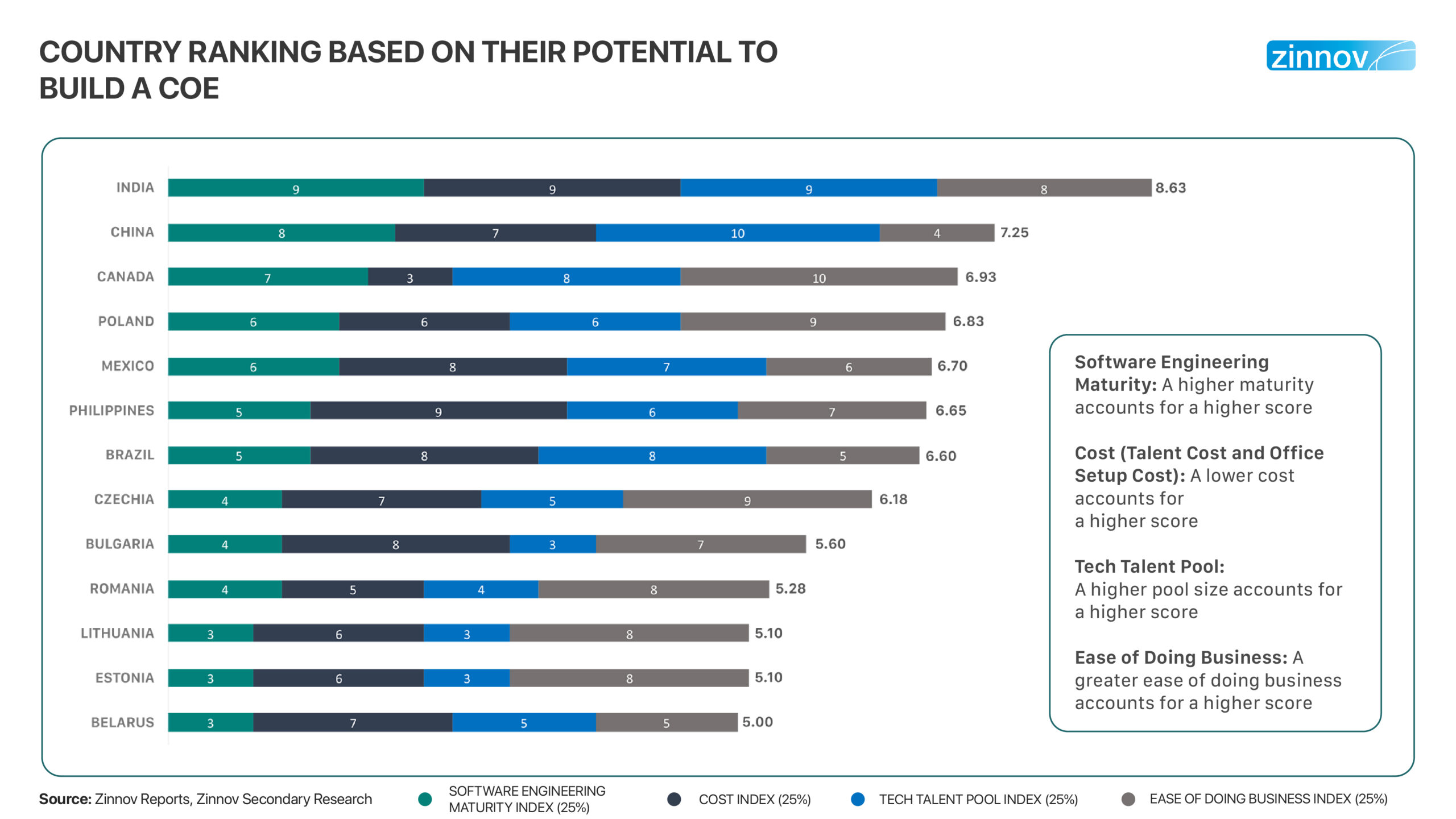
Zinnov’s analysis of Global COE Hotspots based on talent, cost, ease of doing business, and ecosystem maturity suggests Mexico to be one of the top 5 Hotspots to expand globally and set up COEs.
Compared to other LATAM (Latin America) countries, Mexico has taken the lead since 2006. The country’s digital efforts have been noteworthy. The construction of world-class business and technology parks, the drafting of pro-business policies, improvement in educational resources to bolster STEM (Science, Technology, Engineering, Mathematics) growth, among other measures have rapidly attracted ER&D (Engineering Research and Development) spenders from across the world.
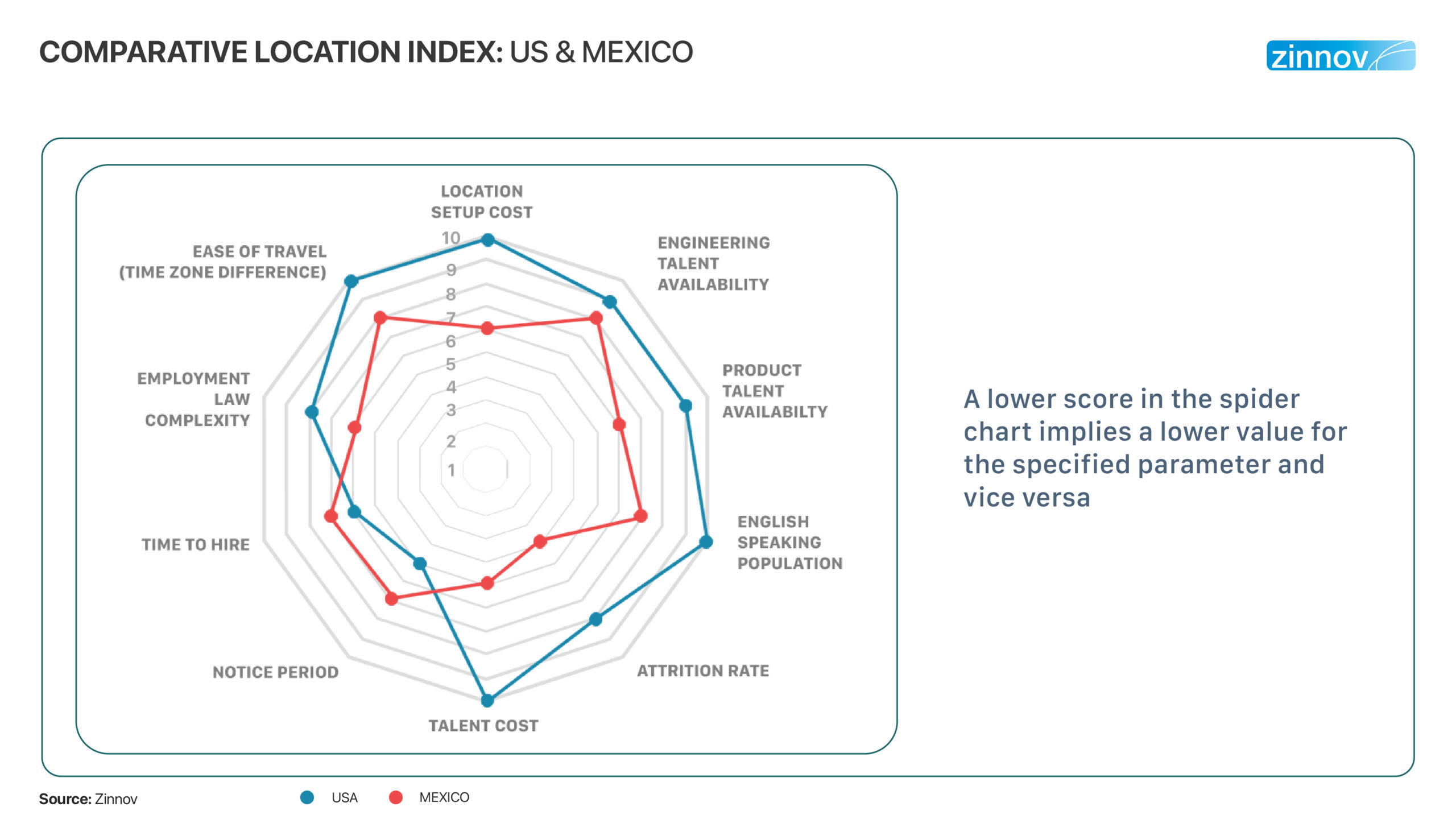
Mexico has a high concentration of full-stack developers, project managers, UX/UI designers, system admins, SPs, back-end developers, etc. The average talent pool accounts for 213k+ individuals yearly (fresh + experienced talent), with an annual attrition rate of ~8% only, as of 2020.This indicates high retention levels. A leader can expect to work with employees longer, improve their knowledge and experience, while enhancing credibility with reduced changes in job roles. However, we believe COVID-19 have impacted the talent market dynamics dramatically. Our upcoming report will focus on the rekindling in potential COE Hotspots due to the global pandemic.
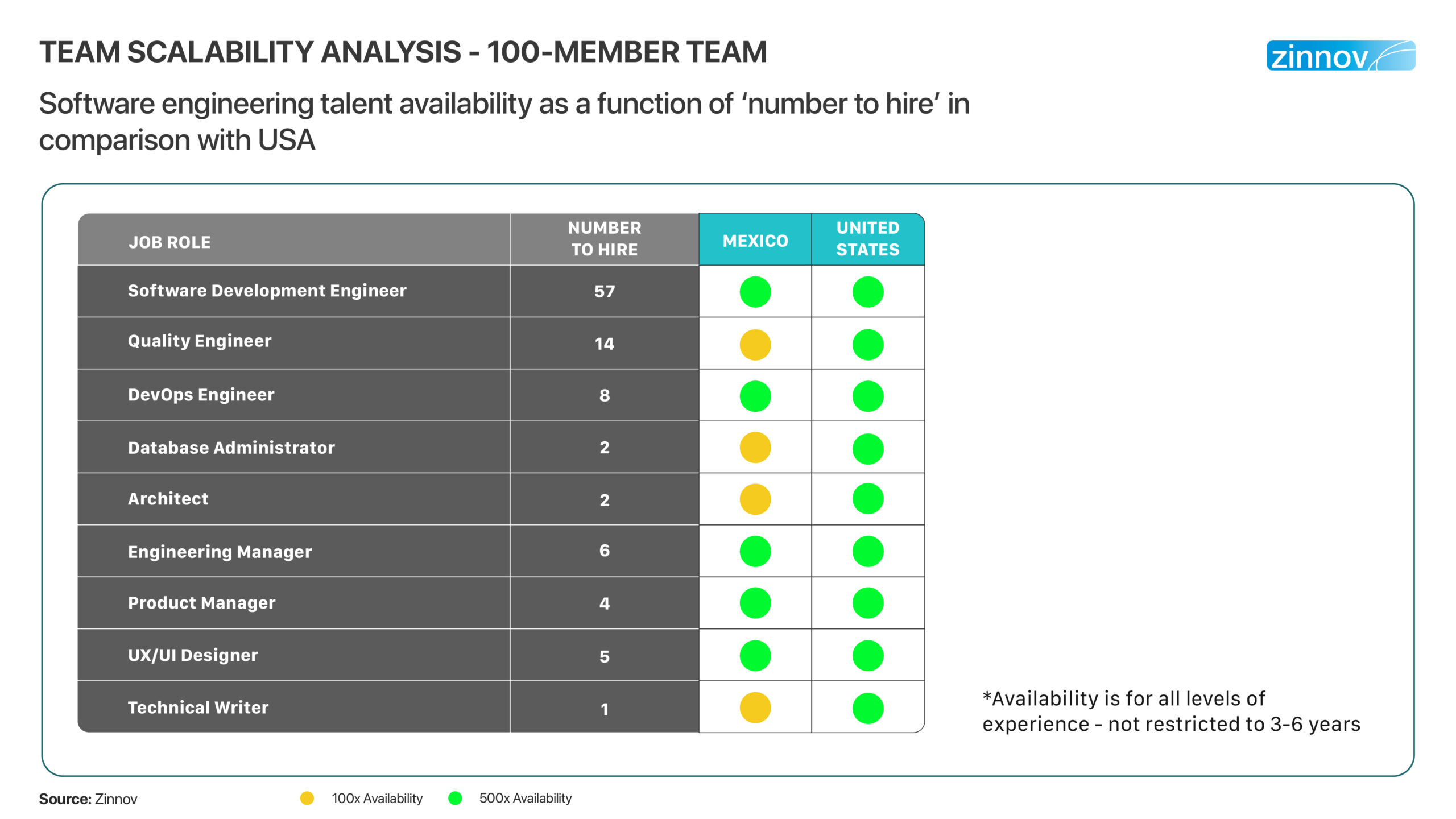
Mexico has high potential to build scalable full software teams. Setting up large engineering teams in Mexico, in comparison to the U.S. provides 60% cost savings for global companies.

Furthermore, when we think in terms of a Mexican Software Development Engineer’s (SDE) average salary expectations, it usually comes to USD 38,500. In contrast, the average expectations of a U.S. SDE come to an estimated USD 72,162. Leaders can leverage this visible disparity in compensation to scale their core team in Mexico without burning a hole in their pockets.
When we go deeper into the logistics, Mexico is lower on the build-out cost index, compared to developed economies such as the U.S.
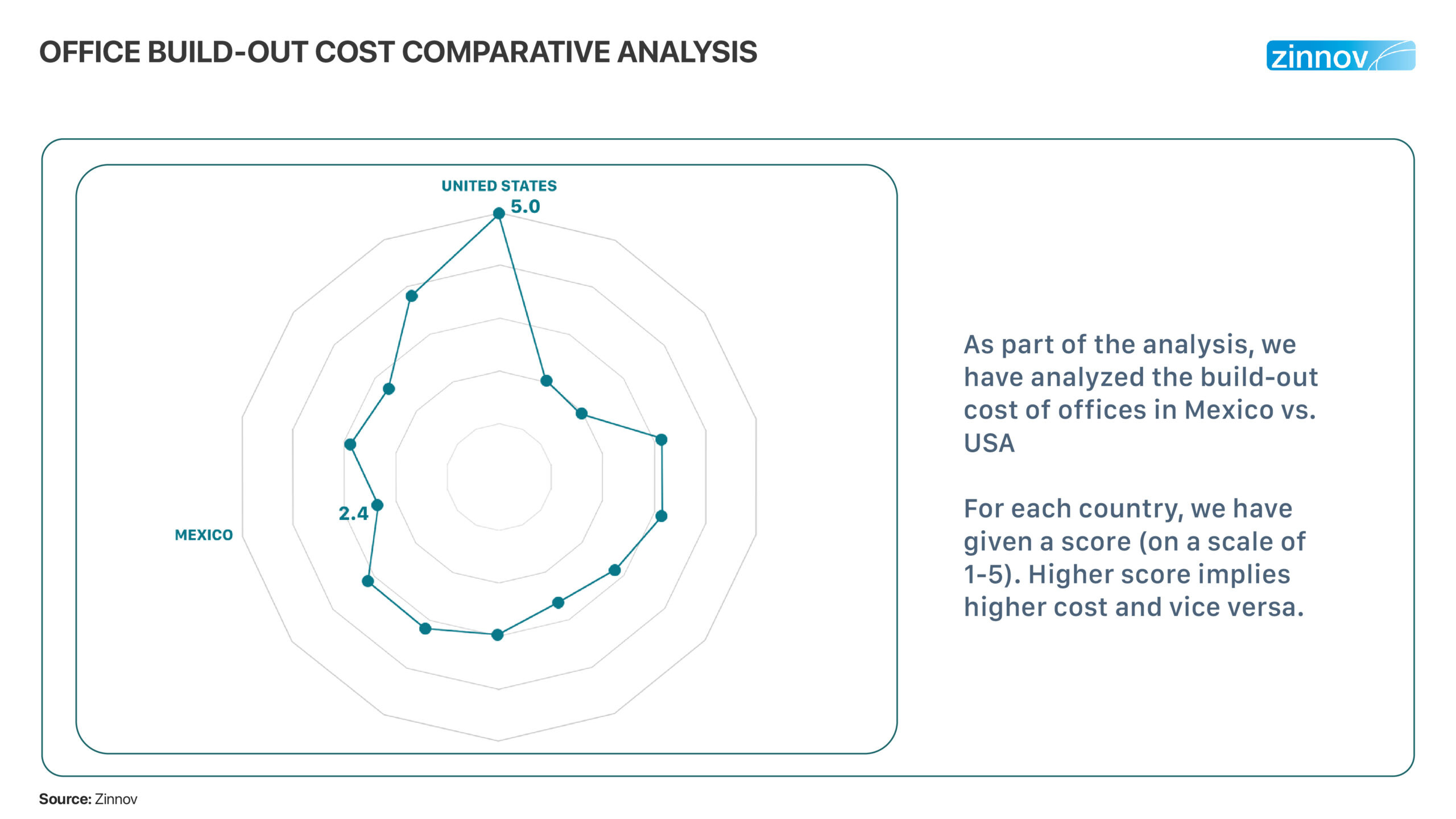
Additionally, if leaders are opting for plug-and-play options, Mexico showcases visible cost arbitrage compared to US that companies can leverage.
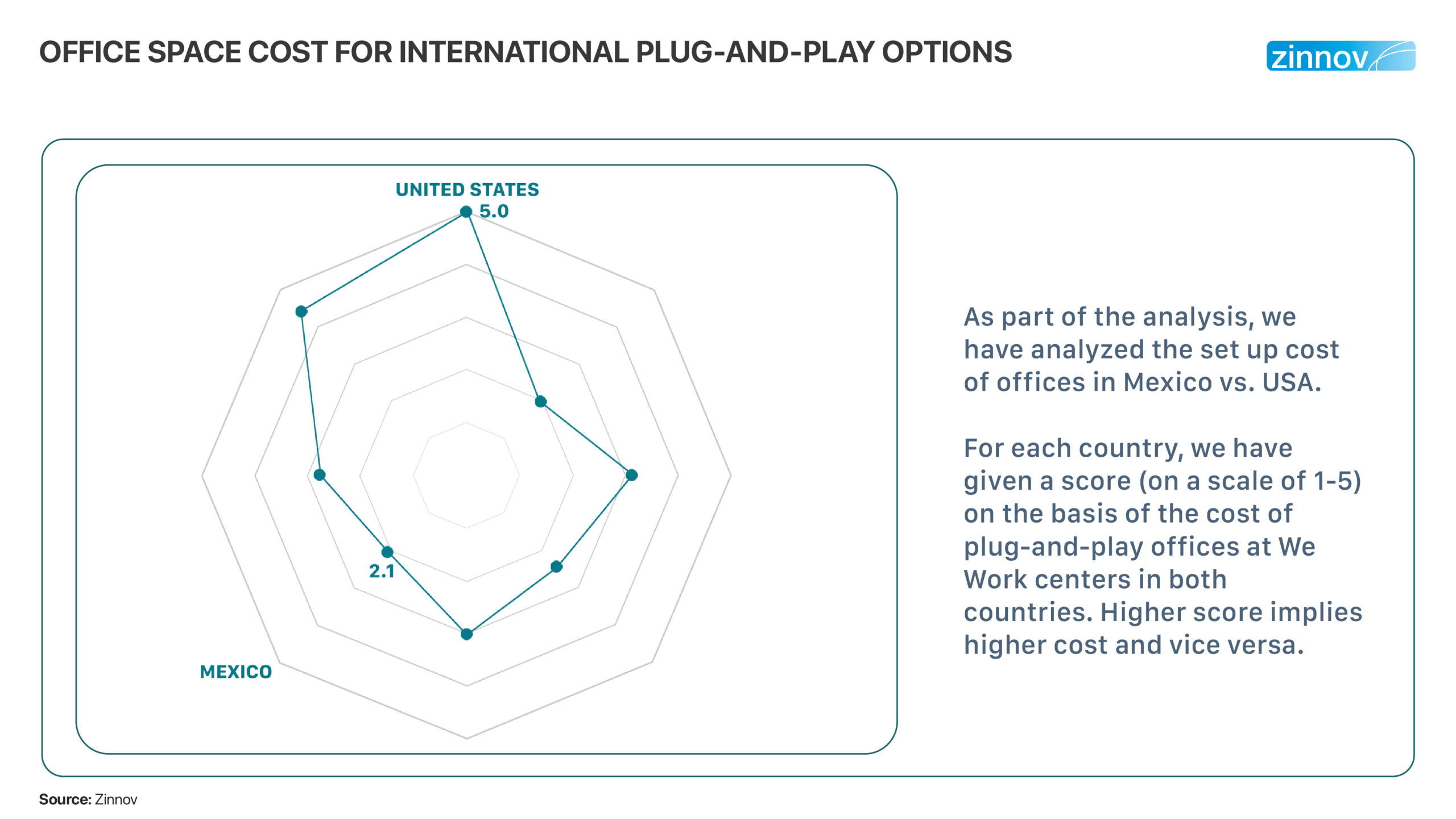
These favorable factors have transformed Mexico into a digital epicenter for leaders.
Guadalajara, Monterrey, and Mexico City collectively employ 35% of the SDE talent pool in Mexico. Companies like Oracle, Amazon, Microsoft alike are proactively recruiting local talent and expanding operations in Mexico.
USD 23 Bn has been invested in Automotive manufacturing in recent times. The country has 8 automotive giants, including Ford, Chrysler, GM, VW, Toyota, Nissan, Mazda, and Honda, making it the second-largest automobile manufacturing nation in the Western Hemisphere.
It is also the fifth-largest medical device exporter across the globe and has the presence of companies like Medtronic, Kimberly Clark, Boston Scientific, and Johnson & Johnson.
Mexico has 63 universities out of the top 400 universities in the LATAM region, making it a strong education hub. Furthermore, it has 1250 higher education institutions — a good mix of public/private, technology, and teacher training institutes. In fact, in the QS World Top 600 Universities in Computer Science – Universidad Nacional Autonoma De Mexico and Technologico De Monterrey ranks 139 and 189, respectively. Additionally, in the QS Latin America Top 400 Universities, Instituto Politecnico Nacional stands at the 25th rank, and the University of Guadalajara holds the 46th rank, showcasing its laudable knowledge prowess. These universities have a definitive technology bent, which is demonstrated in their research centers. Each center focuses on distinctive focus areas such as Industrial Automation, AI & Robotics, Telecommunications, Bio-inspired Algorithms, ML Models, among others. Bosch, Oracle, Ford, GE, Continental, etc., all have long term tie-ups with these institutions alike, and time-to-time train STEM talents, host learning programs, provide placement offers, and more.
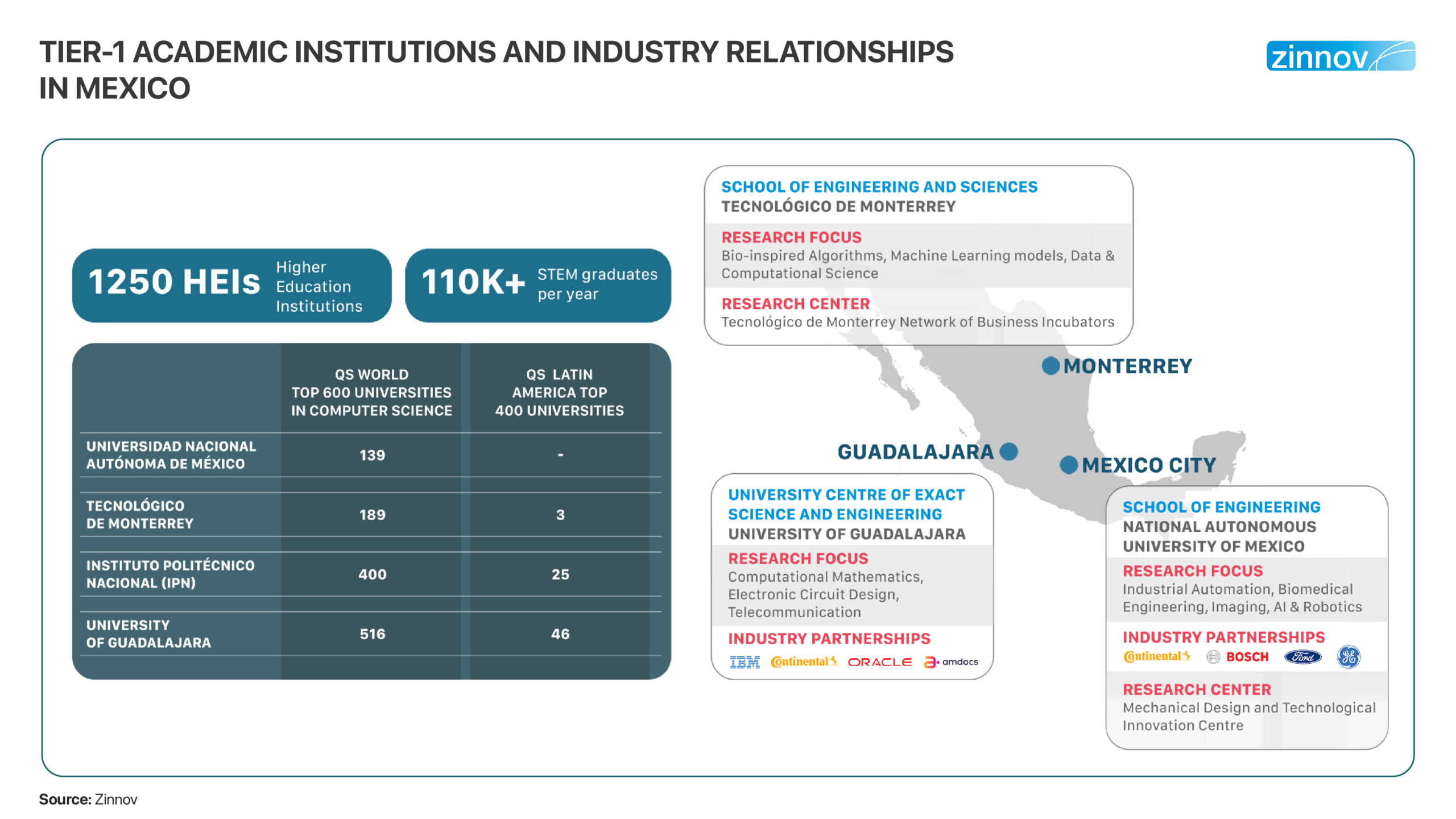
Mexico has 300+ Technology start-ups with focus areas on EdTech, FinTech, Tourism, Software & Data, Internet of Things (IoT), and Food&Beverage (F&B) verticals. In fact, the Venture Capital (VC) spending on Mexican start-ups has reached USD 1.2 Bn, as of 2020. However, there are no unicorns witnessed from Mexico yet. But start-ups like Bitso (exchange platform for cryptocurrencies – recent funding USD 81 Mn), Justo (platform for ordering groceries – recent funding USD 100 Mn), Dev.f (EdTech company – recent funding USD 1.4 Mn), among others, have the potential to be unicorns soon.

Coding languages like C++ and Java are part of the education curriculum from the start and most students are inclined towards engineering traditionally. This upskilling talent imperative has helped create a steady talent pipeline, to meet the needs of customers, and rapidly bolster innovation. The latest business trends indicate a high demand for engineering SPs to help with implementations, consultancy, integration, etc., and improve revenue generation from customers. Mexican SPs are committed, highly motivated, and have a decent continuous personal development (CPD) at place. Additionally, the presence of top SP companies like IBM, HP, EPAM, etc. has made the country a potential SP hive. These factors shall help enterprises not only enhance product capabilities but also attract skilled talent, by forming a comprehensive brand portfolio.
Zinnov’s analysis suggests Mexico has a good Ease of Doing Business ranking based on its large tech talent pool, cost arbitrage, SDE maturity, geopolitical stability, connectivity, and English capability lens.
Zinnov’s Ease of Doing Business analysis is calculated across geographical stability, IP and data privacy and spoken English proficiency. Mexico ranks 10th out of the 13 countries.
Here are some key components:
English, Spanish, and French are the top languages spoken in Mexico. So, enterprises can clearly interact with their employees, with a reduced scope of miscommunication.
Developing a nearshore COE in Mexico has helped leaders be up to date with project developments due to its close proximity to the U.S. There are over 200 flights available, which helps nearshored teams to physically meet each other without experiencing a long travel time. Also, since the time zones are similar, digital collaboration is nearly on a real-time basis.
Mexico City, Guadalajara, Tijuana, and Monterrey are the top cities of Mexico having high technology inclination. These cities have a business-friendly environment with reduced corruption and instability due to Mafia limits.
Employee Laws in Mexico are highly employee favoring, with the government implementing multiple measures in terms of compensation structure, termination, taxation, and more, to support Mexican employees.
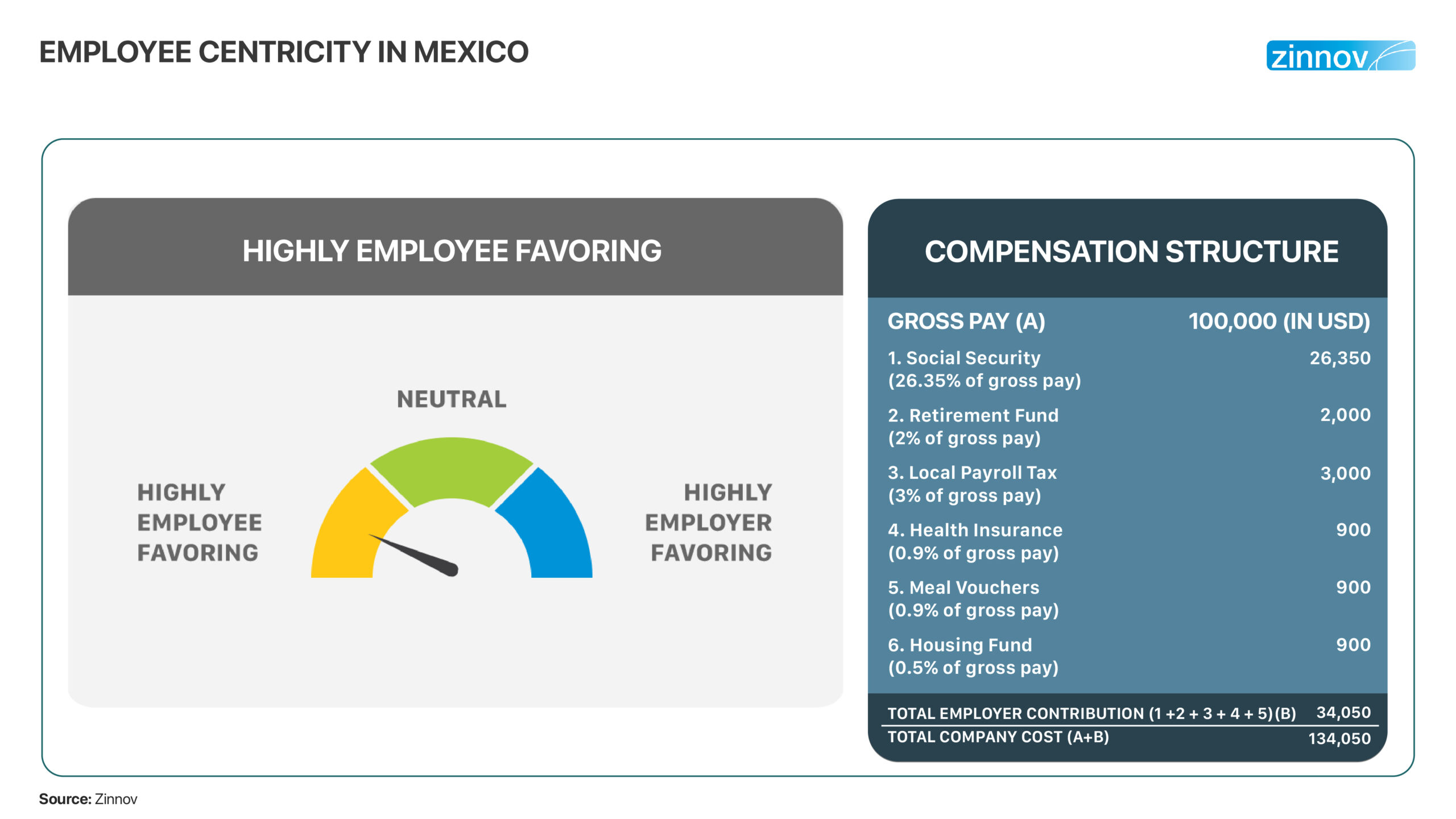
An employer must contribute to social security, health insurance, pension, housing, local payroll tax, and meal vouchers.
The average notice period ranges from 2-12 weeks, depending on the duration of the employment. A written notice with a specific reason outlined in the labor code is required for terminating an employee.
In 2018, Mexico passed a Fintech law, the first of its kind in LATAM, aimed at providing Fintech companies licenses to operate as financial institutions. Also, if a COE is built in a special economic zone (SEZ), income tax will be exempted for the first 10 years, and an additional discount of 50% on income tax will be provided for the next five years. Also, nil value-added tax (VAT) will be charged for services to the investor and those who acquire goods to use in the SEZ. Lastly, the USMCA (United States-Mexico-Canada) deal, 2020, has helped unionize the Mexican workforce and boost business in some verticals, such as Automotive.
Mexico is a thriving Center of Excellence hub with a competitive and strong labor force. It is low on the cost index, offers good technology infrastructure, and is business friendly. Leaders who are agile, have a higher sense of purpose and desire better performance should act in accordance to derive exponential value. Quick decision-making is imperative to accelerate immunity in the next normal.
A COE is an expert entity that has exceptional knowledge in a specific field in an organization, that either works across business units (BUs) or within BUs. A COE consists of highly-skilled experts, who enable the dissemination of knowledge, share best practices, and enable rapid execution.
A COE can be an effective means of solution to a challenge. By setting up a COE, you can have a dedicated team with expertise in a particular domain. Having a COE enables you to experiment and innovate processes, and they eliminate risk and monitor cost.
A Global Center of Excellence is a transformation or an innovation hub that can house multiple COEs and comprises of teams with skilled workers who provide best practices in a specific area for the organization, in order to augment growth for the business.
The two primary modalities to set up a GCoE is build-out and plug-and-play. Build-out refers to building and setting up a complete facility from the ground up, in a different offshore location. Plug-and-play is an affordable, low risk, and no long-term commitment solution with a faster turnaround time.
Aspects like Mexico’s proximity to the US, government initiatives, skilled talent in the technology sector, fresh graduates from universities – compared to other LATAM countries Mexico has the largest STEM graduates, and seasoned infrastructure have made it a thriving ecosystem for near/offshoring.